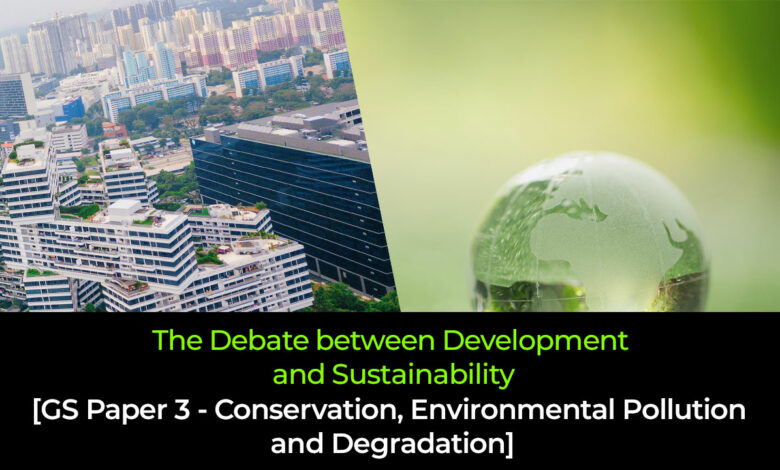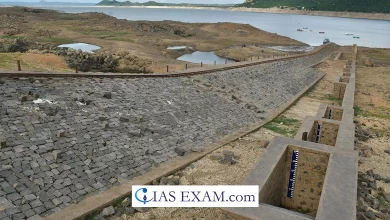The Debate between Development and Sustainability
[GS Paper 3 - Conservation, Environmental Pollution and Degradation]

Context – According to NITI Aayog, “600 million people in India face high to extreme water stress with nearly 70% of water being contaminated; India is placed at 120th amongst 122 countries in the water quality index”.
The latest global environmental ranking by Yale and Columbia Universities puts India at the bottom among 180 countries.
Development Vs Sustainability
Economic development means different things to different people. On a broad scale, anything a community does to foster and create a healthy economy can fall under the auspice of economic development.
The integration of environmental health, social equity and economic vitality in order to create thriving, healthy, diverse and resilient communities for this generation and generations to come.
The practice of sustainability recognizes how these issues are interconnected and requires a systems approach and an acknowledgement of complexity. Sustainability is the balance between the environment, equity, and economy.
Advantages of Sustainability
- Sustainable practices support ecological, human, and economic health and vitality.
- Sustainability presumes that resources are finite, and should be used conservatively and wisely with a view to long-term priorities and consequences of the ways in which resources are used.
- In simplest terms, sustainability is about our children and our grandchildren, and the world we will leave them.
Carrying Capacity of Earth
- Carrying capacity is the maximum number of a species an environment can support indefinitely. Every species has a carrying capacity, even humans. The species population size is limited by environmental factors like adequate food, shelter, water, and mates. If these needs are not met, the population will decrease until the resource rebounds.
- No species has altered the Earth’s natural landscape the way humans have. Global climate change, mass extinction, and overexploitation of our global commons are all examples of the ways in which humans have altered the natural landscape.
- Our growing population, coupled with rising affluence and per capita impact, is driving our planet closer to its tipping point.
- With the population expected to reach 5 billion by 2050, many wonder if our natural resources can keep up with our growing demands.
Development vs Environment issues
- Unemployment: For India, the national context is shaped by high youth unemployment, millions more entering the workforce each year, and a country hungry for substantial investments in hard infrastructure to industrialize and urbanize.
- Growth with low emission footprint: India’s economic growth in the last three decades, led by growth in the services sector, has come at a significantly lower emissions footprint.
- Infrastructure: But in the coming decades, India will have to move to an investment-led and manufacturing-intensive growth model to create job opportunities and create entirely new cities and infrastructure to accommodate and connect an increasingly urban population.
Why a Carbon Fee and Dividend is Imperative?
- It is clear that we will soon pass the limit on carbon emissions, because it requires decades to replace fossil fuel energy infrastructure with carbon-neutral and carbon negative energies.
- A coherent national transition strategy is important in a global context where industrialized countries are discussing the imposition of carbon border taxes while failing to provide developing countries the necessary carbon space to grow or the finance and technological assistance necessary to decarbonise.
- What India needs is an overarching green industrialisation strategy that combines laws, policy instruments, and new or reformed implementing institutions to steer its decentralised economic activities to become climate-friendly and resilient.
Way forward
India should set its pace based on its ability to capitalize on the opportunities to create wealth through green industrialisation.





.png)



